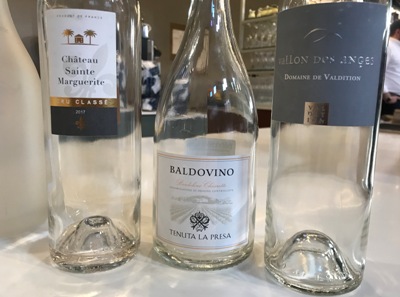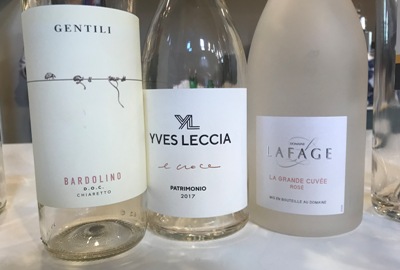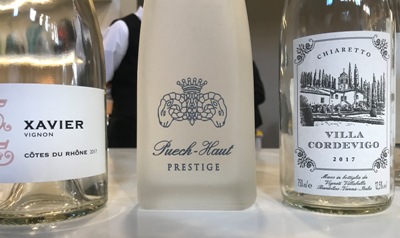The Chiaretto of the future
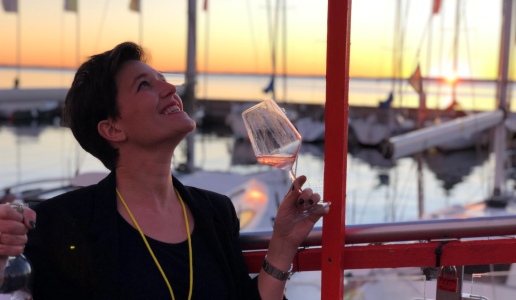
A blind tasting comparison between Italian and French rosé wines and some considerations on vintage 2018
With its “Chiaretto of the Future” event – held in Bardolino on Lake Garda on December 10 – the Consorzio di Tutela Chiaretto e Bardolino producers’ association focused its attention on the future of this wine not only in regard to the next vintage, which still has to be bottled, but also offering some very interesting insights into the path to be taken in years to come.
Given their director Angelo Peretti’s love of rosé wines and his vocation to promote Chiaretto, the Consorzio organized for the press a blind tasting of nine 2017 rosé wines, six from France and three Chiaretto.
Even if this was not a contest, France won… at least for now!
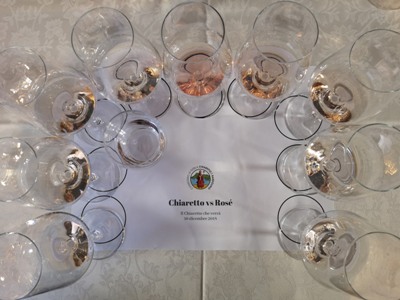
The wines were strictly unidentifiable and they were served three at a time. The top three are indicated (there is a draw) according to the evaluations we were asked to make at the end of the tasting based on our own preferences.
Taking part in the tasting were 19 journalists, who were the “special jury”.
The wines in the blind tasting were served in the following order (varietals in parentheses):
- Coteaux d'Aix en Provence Rosé Classique Vallon des Anges 2017 Domaine de Valdition (Cinsault, Grenache) – 3rd place
- Bardolino Chiaretto Baldovino 2017 Tenuta La Presa (Corvina, Rondinella)
- Côtes de Provence Cru Classé Rosé 2017 Château Sainte Marguerite (Grenache, Cinsault, Syrah)
- Côtes du Roussillon Rosé La Grande Cuvée 2017 Domaine Lafage (Grenache Gris, Mourvèdre) – tied for 1st place
- Patrimonio Rosé 2017 Domaine Yves Leccia (Nielluciu, Grenache)
- Bardolino Chiaretto 2017 Gentili (Corvina, Rondinella)
- Bardolino Chiaretto Classico Biologico 2017 Villa Cordevigo - Vigneti Villabella (Corvina, Rondinella)
- Languedoc Prestige Rosé 2017 Château Puech Haut (Grenache, Cinsault) – tied for 1st place
- Côtes du Rhône Rosé 2017 Xavier Vignon (Mourvèdre, Cinsault, Grenache, Syrah) – 2nd place
Even if the podium was blatantly dominated by France, what is important is that Chiaretto held its own and were only a few points back. The question now is how this wine can gain places in the future and achieve greater notoriety on the global panorama of pink wines. There would appear to be two solutions.
The first involves a change in mentality.
“Rosé must start from the vineyard,” Consorzio Director Angelo Peretti said, pointing out the different approaches Italy and France have towards rosé. The point he was making was that the Consorzio’s producers need to focus on both Bardolino and Chiaretto and dedicate some vineyards only to produce Chiaretto and the others to Bardolino.
The second involved obtaining a greater awareness.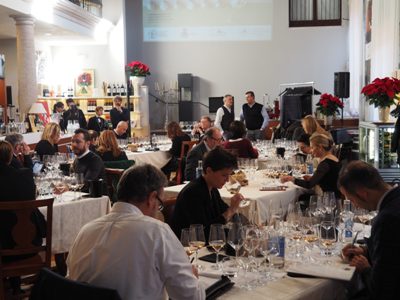
It is important to understand the importance of selecting the variety of grape used. It is not by accident that in France the primary variety for rosé is Grenache and for Chiaretto it is Corvina. The bottom line: not all red wine grapes are suited to make great rosé.
n primo luogo serve un cambio di mentalità.
“Il vino rosato deve partire dalla vigna”, lo afferma il direttore del Consorzio Angelo Peretti sottolineando il differente approccio italiano e francese nei confronti del vino rosato. L’invito rivolto ai produttori è quindi quello di destinare, nell’ottica di valorizzare entrambi i vini, alcuni vigneti solo alla produzione di Chiaretto e altri solo alla produzione di Bardolino.
These two aspects (to be simple) are sufficient to obtain results that are pivotal not only in regard to the immediate quality of the wine but also, and importantly, to the propensity of the wines to age, which at present appears more common to French rosé than to Chiaretto.
The question thus arises whether focusing on both will still produce Chiaretto that are easy to drink, fresh and suited for summer. “Without a doubt,” Peretti added, “we will continue to enjoy it even in summer, on the rocks, with a pizza and maybe even as a sparkling wine, a version that will have a growing importance in the future”.
With the hope that Chiaretto’s future will be rosy (pardon the pun), allow me to conclude with a few observations on vintage 2018, the “Chiaretto of the future”.
2018 was overall a good year. Budding and blossoming struck a nice balance, temperatures were above the norm, as was the rainfall, which created some problems for producers in regard to treatments. Exchanges of information were frequent between the Consorzio and producers in an atmosphere of constant cooperation and support. The weather was favorable during harvest, which was slightly early, and the grapes that arrived at the winery were healthy and ripe. (source: Andrea Vantini, head of the technical division of the Consorzio di Tutela del Chiaretto e Bardolino).

 Italiano
Italiano

